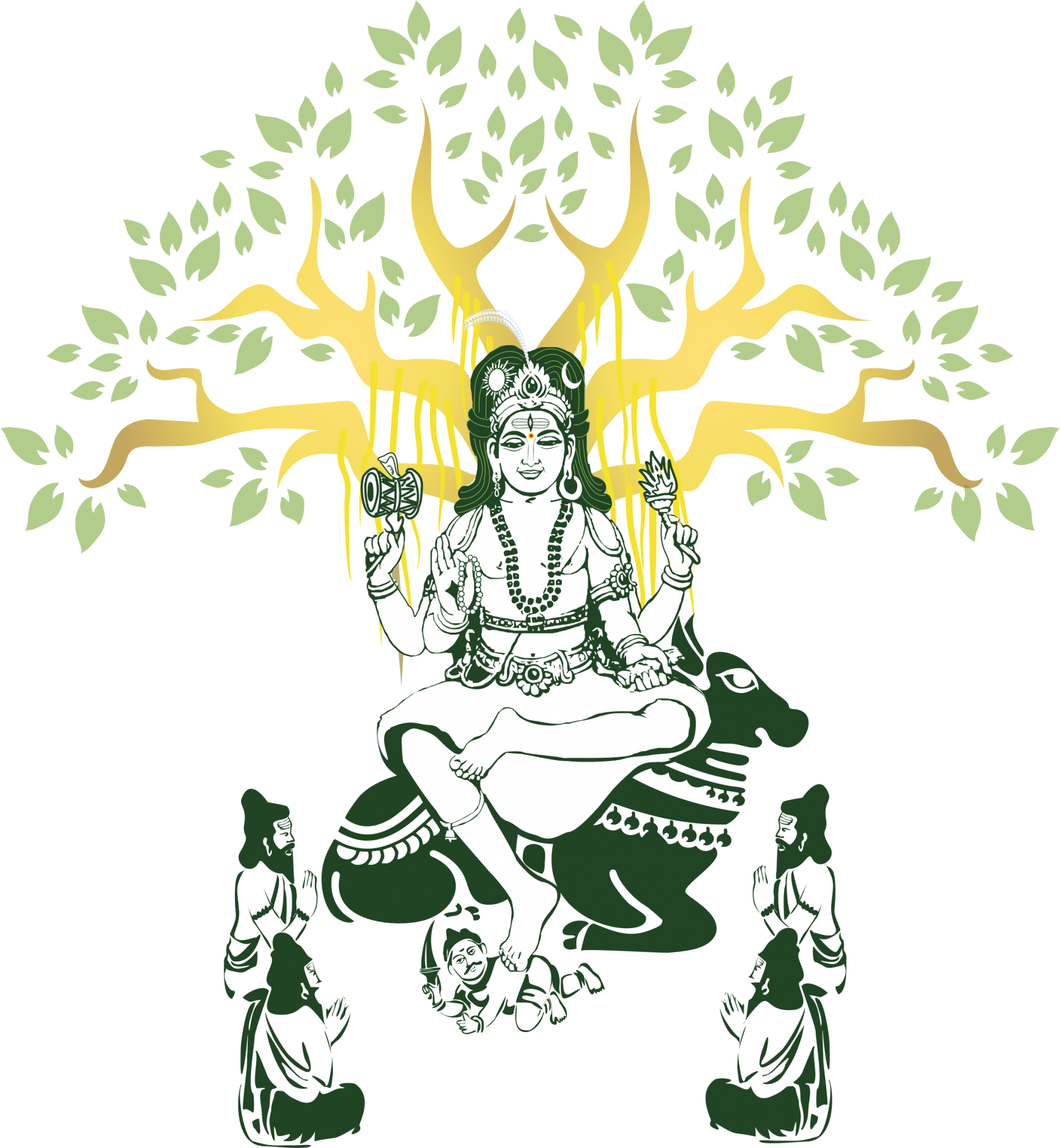Bhagavad Gita (Gita Chapter 11)
Chapter 11 Verse 55 (Part 1)
Chapter 11 Verse 55 (Part 2)
Chapter 11 Verse 55 (Part 3)
[From Verse 34]
śrīmadbhagavadgītābhāṣyam
ēkādaśō̕dhyāyaḥ
drōṇaṁ ca bhīṣmaṁ ca jayadrathaṁ ca karṇaṁ
tathān’yānapi yōdhavīrān .
mayā hatānstvaṁ jahi mā vyathiṣṭhā
yudhyasva jētāsi raṇē sapatnān . 11.34
drōṇaṁ ca, yēṣu yēṣu yōdhēṣu arjunasya āśaṅkā tānstān vyapadiśati bhagavān, mayā hatāniti . tatra drōṇabhīṣmayōḥ tāvat prasid’dham āśaṅkākāraṇam . drōṇastu dhanurvēdācāryaḥ divyāstrasampannaḥ, ātmanaśca viśēṣataḥ guruḥ gariṣṭhaḥ . bhīṣmaśca svacchandamr̥ tyuḥ divyāstrasampannaśca paraśurāmēṇa dvandvayud’dham agamat, na ca parājitaḥ . tathā jayadrathaḥ, yasya pitā tapaḥ carati ‘mama putrasya śiraḥ bhūmau nipātayiṣyati yaḥ, tasyāpi śiraḥ patiṣyati’ iti . karṇō̕pi vāsavadattayā śaktyā tvamōghayā sampannaḥ sūryaputraḥ kānīnaḥ yataḥ, ataḥ tannāmnaiva nirdēśaḥ . mayā hatān tvaṁ jahi nimittamātrēṇa . mā vyathiṣṭhāḥ tēbhyaḥ bhayaṁ mā kārṣīḥ . yudhyasva jētāsi duryōdhanaprabhr̥ tīn raṇē yud’dhē sapatnān śatrūn .
sañjaya uvāca —
ētacchrutvā vacanaṁ kēśavasya
kr̥tāñjalirvēpamānaḥ kirīṭī namaskr̥tvā bhūya ēvāha
kr̥ṣṇansagadgadaṁ bhītabhītaḥ praṇamya . 11.35
ētat śrutvā vacanaṁ kēśavasya pūrvōktaṁ kr̥ tāñjaliḥ san vēpamānaḥ kampamānaḥ kirīṭī namaskr̥ tvā, bhūyaḥ punaḥ ēva āha uktavān kr̥ ṣṇaṁ sagadgadaṁ bhayāviṣṭasya duḥkhābhighātāt snēhāviṣṭasya ca harṣōdbhavāt, aśrupūrṇanētratvē sati ślēṣmaṇā kaṇṭhāvarōdhaḥ ; tataśca vācaḥ apāṭavaṁ mandaśabdatvaṁ yat sa gadgadaḥ tēna saha vartata iti sagadgadaṁ vacanam āha iti vacanakriyāviśēṣaṇam ētat . bhītabhītaḥ punaḥ punaḥ bhayāviṣṭacētāḥ san praṇamya prahvaḥ bhūtvā, ‘āha’ iti vyavahitēna sambandhaḥ . atra avasarē sañjayavacanaṁ sābhiprāyam . katham ? drōṇādiṣu arjunēna nihatēṣu ajēyēṣu caturṣu, nirāśrayaḥ duryōdhanaḥ nihataḥ ēva iti matvā dhr̥ tarāṣṭraḥ jayaṁ prati nirāśaḥ san sandhiṁ kariṣyati, tataḥ śāntiḥ ubhayēṣāṁ bhaviṣyati iti . tadapi na aśrauṣīt dhr̥ tarāṣṭraḥ bhavitavyavaśāt .
arjuna uvāca — sthānē hrṣī̥ kēśa tava prakīrtyā
jagatprahrṣ̥ yatyanurajyatē ca rakṣānsi
bhītāni diśō dravanti sarvē namasyanti ca
sid’dhasaṅghāḥ . 11.36.
sthānē yuktam . kiṁ tat ? tava prakīrtyā tvanmāhātmyakīrtanēna śrutēna, hē hrṣīk̥ ēśa, yat jagat prahrṣyati praharṣam upaiti, tat sthān̥ ē yuktam, ityarthaḥ . athavā viṣayaviśēṣaṇaṁ sthānē iti . yuktaḥ harṣādiviṣayaḥ bhagavān, yataḥ īśvaraḥ sarvātmā sarvabhūtasuhrcca ̥ iti . tathā anurajyatē anurāgaṁ ca upaiti ; tacca viṣayē iti vyākhyēyam . kiñca, rakṣānsi bhītāni bhayāviṣṭāni diśaḥ dravanti gacchanti ; tacca sthānē viṣayē . sarvē namasyanti namaskurvanti ca sid’dhasaṅghāḥ sid’dhānāṁ samudāyāḥ kapilādīnām, tacca sthānē . bhagavatō harṣādiviṣayatvē hētuṁ darśayati —
kasmācca tē na namēranmahātma
n’garīyasē brahmaṇō̕pyādikartrē ananta
dēvēśa jagannivāsa tvamakṣaraṁ
sadasattatparaṁ yat . 11.37 .
kasmācca hētōḥ tē tubhyaṁ na namēran namaskuryuḥ hē mahātman, garīyasē gurutarāya ; yataḥ brahmaṇaḥ hiraṇyagarbhasya api ādikartā kāraṇam ataḥ tasmāt ādikartrē . katham ētē na namaskuryuḥ ? ataḥ harṣādīnāṁ namaskārasya ca sthānaṁ tvaṁ ar’haḥ viṣayaḥ ityarthaḥ . hē ananta dēvēśa hē jagannivāsa tvam akṣaraṁ tat param, yat vēdāntēṣu śrūyatē . kiṁ tat ? sadasat iti . sat vidyamānam, asat ca yatra nāsti iti bud’dhiḥ ; tē upadhānabhūtē sadasatī yasya akṣarasya, yaddvārēṇa sadasatī iti upacaryatē . paramārthatastu sadasatōḥ paraṁ tat akṣaraṁ yat akṣaraṁ vēdavidaḥ vadanti . tat tvamēva, na an’yat iti abhiprāyaḥ . punarapi stauti —
tvamādidēvaḥ puruṣaḥ purāṇastvam asya
viśvasya paraṁ nidhānam vēttāsi
vēdyaṁ ca paraṁ ca dhāma
tvayā tataṁ viśvamanantarūpa . 11.38 .
tvam ādidēvaḥ, jagataḥ sraṣṭrtvāt . puruṣaḥ, puri śayanāt purāṇaḥ ̥ cirantanaḥ tvam ēva asya viśvasya paraṁ prakrṣṭaṁ nidhānaṁ ̥ nidhīyatē asmin jagat sarvaṁ mahāpralayādau iti . kiñca, vēttā asi, vēditā asi sarvasyaiva vēdyajātasya . yat ca vēdyaṁ vēdanār’haṁ tacca asi paraṁ ca dhāma paramaṁ padaṁ vaiṣṇavam . tvayā tataṁ vyāptaṁ viśvaṁ samastam, hē anantarūpa antō na vidyatē tava rūpāṇām .
kiñca
—
vāyuryamō̕gnirvaruṇ gnirvaruṇaḥ śaśāṅkaḥ
prajāpatistva patistva patistvaṁ prapitāmahaśca
namō namastē̕stu sahasrakr stu sahasrakr̥tvaḥ punaśca
bhūyō̕pi namō namastē 11.39


